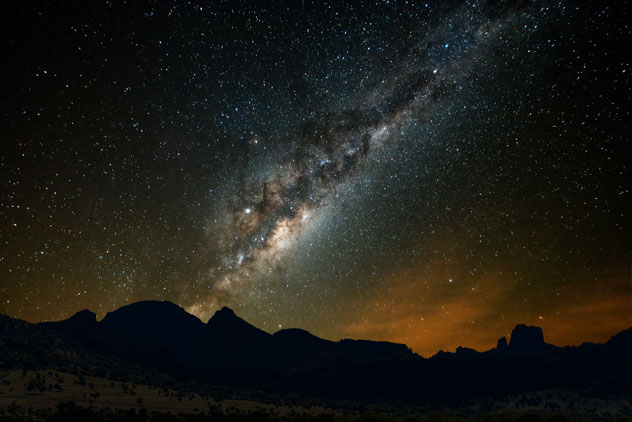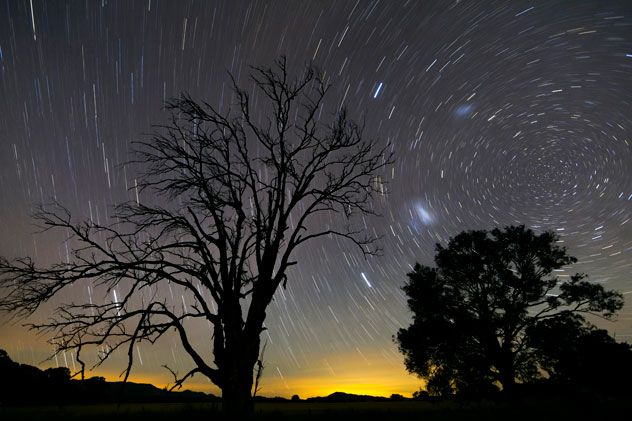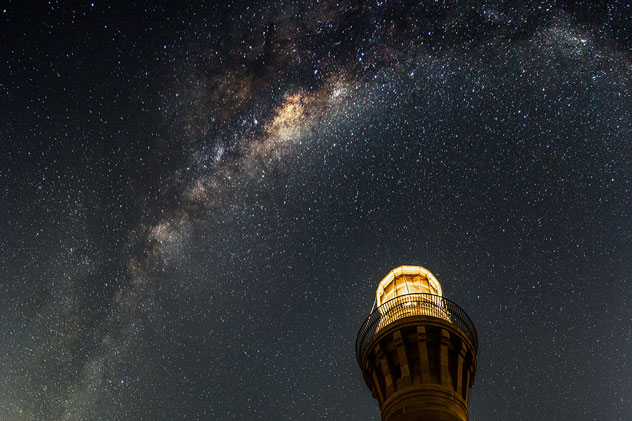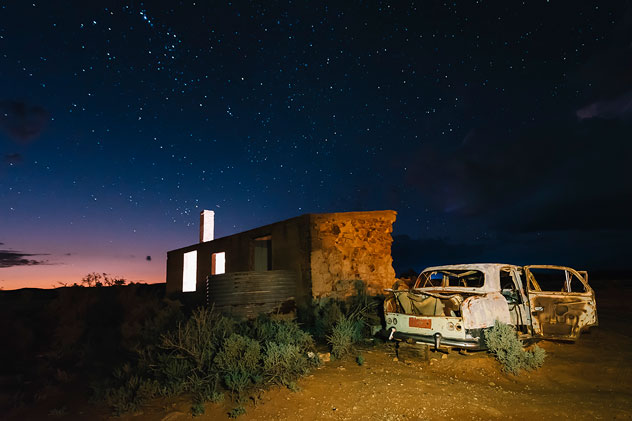The ultimate guide to stargazing in NSW

Night sky tourism, or stargazing, is an excellent reason to hit the road. You’ll find extraordinary vantage points dotted across New South Wales, from outback properties to summit lookouts, and even a few urban oases. And while the stars twinkle year round, the best time for gazing is winter, when the dry, crisp nights make the cosmos appear brighter.
Keen for more after dark travel adventures? Check out our guide to noctourism.
Warrumbungle National Park, Orana
Next to no light pollution, low humidity and a higher altitude have seen locals dub Coonabarabran as the astronomy capital of Australia. Just a 30-minute drive west of the town will land you in Warrumbungle National Park, a haven for hikers and stargazers. The night skies here are so spectacular that back in 2016 the national park was the first location in the southern hemisphere to be designated a Dark Sky Park by leading celestial authority DarkSky International. To see the park by night, pitch a tent at Camp Blackman or Ogma Gap campground, or join a ranger-guided stargazing tour departing from the Warrumbungle Visitor Centre. While in town, explore the universe beyond the naked eye with a visit to Siding Spring Observatory and Milroy Observatory.

Warrumbungles National Park
Mudgee Observatory, Central West
One man and his infectious passion for astronomy are what makes Mudgee Observatory a worthwhile stop for stargazers. Over the course of more than four decades, Mudgee local John Vetter has been expanding his understanding of the universe. Taking this love a step further, John has constructed multiple observatories, a theatre and a flat screen planetarium on his property, all of which are open to the public on Thursdays, Fridays and Saturdays. Bookings are essential. John also keeps his website up-to-date with the latest planet and constellation sightings, making an excellent resource for novice astronomers.

Southern skies star trails, Mudgee, New South Wales, Australia
Palm Beach Headland, Greater Sydney
Another destination to receive a DarkSky International southern hemisphere first is Palm Beach Headland, which in 2024 received an Urban Night Sky Place designation. A little over an hour’s drive from the centre of Sydney, this headland at the northern end of the popular surfing peninsula, offers startlingly clear views of the cosmos. It’s all thanks to the local council and the National Parks and Wildlife Service working to keep light pollution to a minimum. Pack a picnic rug and lay beneath the starry vistas in Governor Phillip Park.

Milky way over the lighthouse at Barrenjoey Headland
Outback Astronomy, Far West
Veteran road trippers will know there are few sights more spectacular than the outback sky blanketed in a vibrant view of the Milky Way. Honing in on this astral magic is Outback Astronomy, which is located 10 minutes north of Broken Hill. Here you can recline in a comfy chair and be swaddled in a sleeping bag as you receive live commentary from an expert explaining what lies above. For an extra memorable experience, keep an eye out for upcoming, special astronomy events, like a lunar eclipse. Just be sure to book well in advance. Outback Astronomy also runs daytime shows on the sun and the moon.

The desert at night in Silverton near Broken Hill
Blue Mountains, Greater Sydney
If you’re a keen photographer hoping to capture the night sky against the silhouette of an iconic landscape, head for the Blue Mountains. Despite the area’s proximity to Sydney, the light pollution is at a minimum, meaning the dance of the solar system shines bright beyond the craggy landscape. To learn a little more about what you’re seeing and peer through a telescope, sign up to an astronomer-led tour with Blue Mountains Stargazing. Beginner photographers are also catered for with the Nightscape Astronomy Workshop.






